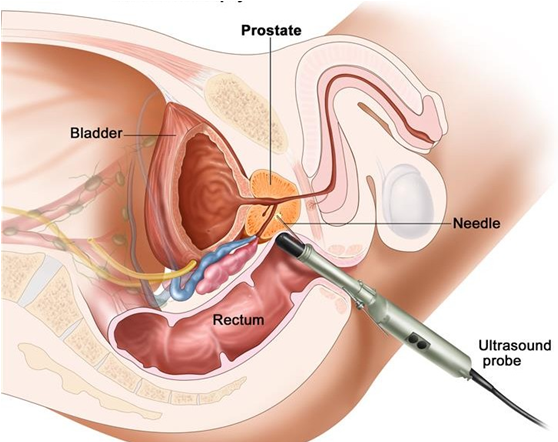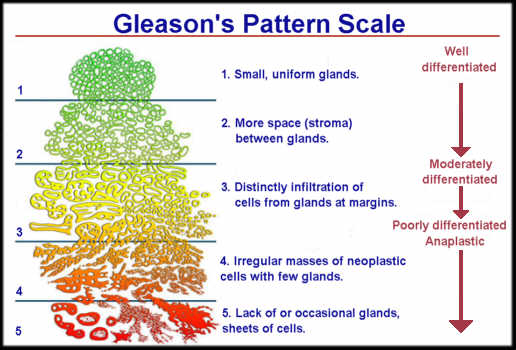
Lorem ipsum dolor sit amet, consectetur adipisicing elit, sed do eiusmod tempor incididunt. More details
Visit your GP first if you have any symptoms or worries. If your GP has concerns about you, he or she will refer you to a rapid access prostate cancer clinic. Most early prostate cancers are diagnosed through rapid access clinics. These clinics are found throughout Ireland in hospitals that are specialised cancer centres. There you will be seen by a urologist and specialist nurse. By attending the clinic, you can avoid waiting for outpatient clinics and any tests you might need are speeded up.
The following tests can usually diagnose prostate cancer:
PSA blood test: Prostate specific antigen (PSA) is a protein that can rise due to disease in your prostate. PSA can be high in conditions other than cancer too. Remember that not every prostate cancer will cause a rise in the level of PSA. If your PSA is high, your GP will usually repeat the blood test a few weeks later. If it is still high, you will be referred to a urology department, often through a rapid access prostate cancer clinic.

Please dowload this booklet on Understanding The PSA Test
Digital rectal exam: The digital rectal exam (DRE) is where your doctor feels your prostate gland through your back passage (rectum) using a gloved finger. He or she can check if your prostate has enlarged or has abnormal tissue, such as hard or lumpy areas.
Transrectal ultrasound (TRUS) and biopsy: A sample of your prostate tissue can be taken and examined under a microscope. This is called a biopsy. It is the only way to make sure the diagnosis of prostate cancer is correct. The biopsy is taken at the hospital during a test called a transrectal ultrasound. For this test, you will be asked to lie on your side and an ultrasound tube called a probe placed in your back passage. A local anaesthetic will be put onto the area around your prostate gland. The ultrasound builds up a picture of the tissues inside your prostate gland. Using this picture, your doctor can take samples from your prostate gland with a needle. Usually up to 12 samples are taken. These will be looked at under a microscope by a doctor in the laboratory. The test is uncomfortable but only lasts 10–15 minutes.

After a prostate biopsy there is a risk of infection. To help prevent an infection your doctor will give you antibiotics beforehand. These will continue for a day or so after the biopsy. After the test you may notice a small amount of blood in your urine or some bleeding from your rectum.
You may get blood in your semen for up to a month afterwards. These are all very common side-effects. Most go away after a few days. But let your doctor or nurse know if they persist or if you get a high temperature or pain in your back passage. He or she will advise you what to do.
Once prostate cancer is diagnosed by biopsy, your doctors need to know the stage and grade of the cancer so they can choose the best treatment for you.
Template biopsy: A template biopsy takes more samples than a TRUS biopsy and is done through the skin between your testicles and back passage. It may be done when a TRUS biopsy has not shown any prostate cancer and your doctor feels there is a need for further tests.
It usually takes some time for all your test results to come back. Naturally, this can be an anxious time for you. It may help to talk things over with the specialist nurse or with a relative or close friend.
You can call the Rapid Access Prostate Clinic nurses on 01 8528377.
The National Cancer Helpline on 1800 200 700 or visit the Daffodil Centre
After your biopsy a doctor called a pathologist will look at the samples under a microscope. Grading refers to how the cancer cells look under the microscope. It describes how normal or abnormal the cells are. The patterns of abnormal cancer cells that are seen are given a grade by the pathologist. This is known as the Gleason score or grade.
The grade helps your doctor to predict how quickly the cancer may grow and behave.
In prostate cancer the scores are usually 3, 4 or 5. Lower grades are more slow growing and the higher grades are fast growing or the least- normal looking. Because prostate cancer cells can vary a lot in how they look, your doctor cannot rely on just one sample. Your doctor takes the two most common scores of prostate cancer in each sample and adds them together to give an overall score. This means the Gleason scale is usually from 6 to 10.
The table on the below shows the risk of prostate cancer spreading based on the Gleason score. Remember the risk depends on other factors too. For example, if your prostate gland feels normal or not and possibly your PSA level. Your doctor will use all of this information to decide on the best treatment for you. Do ask your doctor to explain the table if you are unsure about the information.
|
Risk |
Gleason score |
|
Low |
6 or lower |
|
Medium or intermediate |
7 |
|
High |
8 or higher |
Staging means finding out the size of the tumour and if it has spread to other parts of your body. Tests are used to stage the cancer. Staging allows your doctor to decide the best treatment for you. Knowing the stage also helps your doctor to predict your chance of recovery (prognosis). Staging may not be complete until all the tests are done.

Whether you need any staging tests or not depends on the results of your PSA, Gleason score and how your prostate gland feels to touch. Some men will need no staging tests while others will need one or more. Your doctor will let you know which ones you need to have.